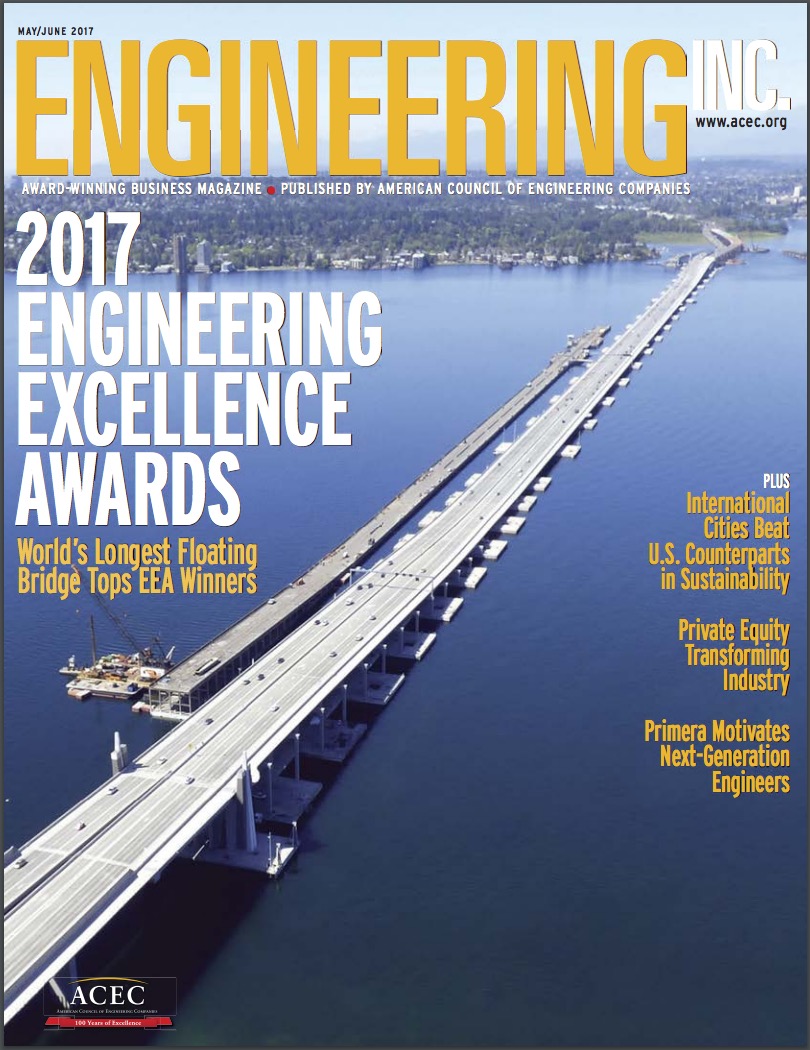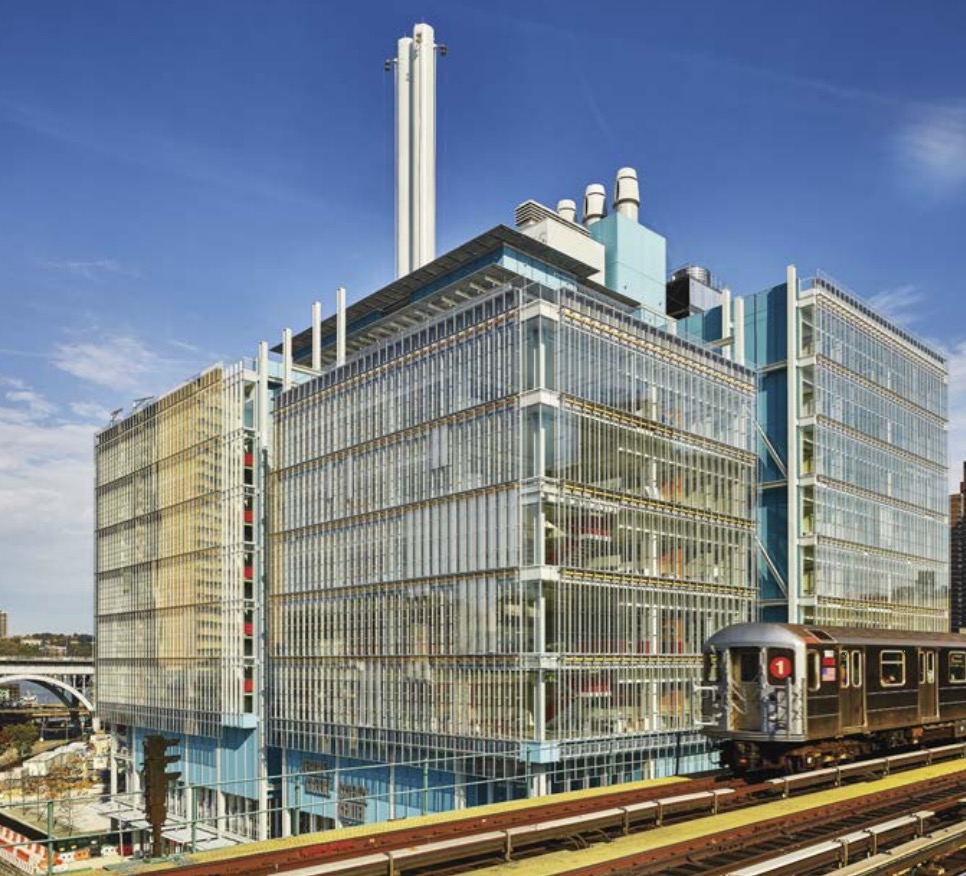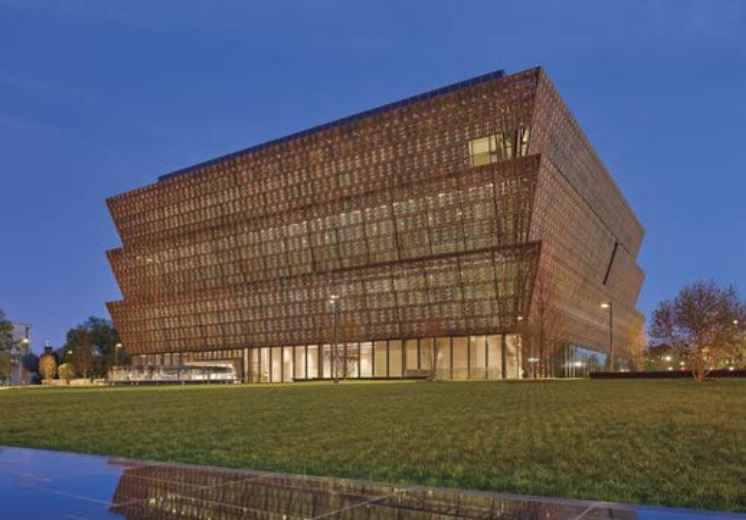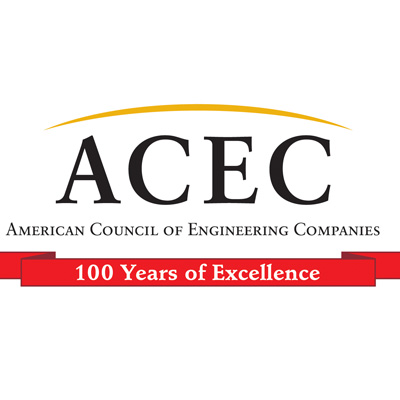AMERICAN COUNCIL OF ENGINEERING COMPANIES (ACEC)
 The 2017 Engineering Excellence Awards Gala— known by ACEC members as the “Academy Awards” of the engineering industry—showcased 162 projects from across the country and around the world.
The 2017 Engineering Excellence Awards Gala— known by ACEC members as the “Academy Awards” of the engineering industry—showcased 162 projects from across the country and around the world.
A panel of more than 30 judges from across the nation representing a wide spectrum of built environment disciplines selected 36 projects for top awards—including 16 finalists for the Grand Conceptor Award, presented for the year’s most outstanding engineering achievement.
Comedian and actor Kevin Nealon hosted the 50th Anniversary Gala, attended by more than 700 members, guests and dignitaries.
2017 Grand Conceptor Award Winner
SR 520 Floating Bridge Replacement and HOV Program
Seattle, Washington
HDR, Seattle, Washington
This dynamic new 1.5-mile span is the world’s longest and largest floating bridge. The superstructure is supported by 21 of the heaviest, widest and deepest longitudinal pontoons ever built, each weighing nearly 11,000 tons. Further stabilized by 54 supplemental pontoons and cables and anchors, the bridge can resist winds of up to 98 mph and 6.3-foot wave heights or the equivalent of a 100-year storm. The new bridge also features an innovative stormwater treatment system that utilizes specially designed catch basins located in the pontoons to collect runoff pollutants. It will also support future multimodal transportation options.
Grand Awards
World Trade Center Transportation Hub (Oculus) Erection Engineering
New York, New York
Buckland & Taylor International, an affiliate of COWI North America, New York, New York
Resembling a pair of hands releasing a white dove, this eye-catching steel and glass dome structure welcomes more than 200,000 daily commuters into Manhattan. Two parallel arches span the 300-foot-long oval-shaped Transit Hall, providing a cathedral-like appearance and reaching a crown height of 100 feet. The dove “wings” consist of variable length rafters extending from the arches as long as 200 feet to form the exterior roof structure. Spaces between supporting columns are enclosed in glass to allow natural light to illuminate the main Transit Hall and create an unprecedented railway station experience.
Pearl Harbor Memorial Bridge
New Haven, Connecticut
AECOM, Rocky Hill, Connecticut
The striking new structure is the first “extradosed” cable-stayed bridge in the United States. Used extensively in Europe and the Far East, “extradosed” bridges employ much shorter stay-towers and are used when height, navigation clearance or aesthetic requirements make other options less feasible. The project team had to meet height restrictions, due to a nearby airport, and clearance restrictions over an active marine channel. A centerpiece of the $2 billion I-95 New Haven Harbor Crossing Corridor Improvement Program, the project adds a distinctive landmark in the New Haven skyline, evoking the profile of the battleships memorialized by its name.
 Jerome L. Greene Science Center
Jerome L. Greene Science Center
New York, New York
Jaros, Baum & Bolles, New York, New York
The nine-story, 450,000-square-foot facility is the largest academic science building in New York City and a paragon for noise reduction, light and temperature control. A groundbreaking double-skin, all-glass curtain wall system diminishes noise from an adjacent elevated subway line—imperative for a neuroscience research facility. The double-skin curtain wall also features various glass compositions to meet exacting standards for light and temperature control, and connects with a unique mechanical ventilation system that repurposes exhaust air from the laboratory spaces, passing it between the layers of the glass curtain wall to keep the facility cool in summer and warm in winter.
See full article for all Grand Awards
Honor Awards
Lockheed Martin Technical Research Laboratory
Denver, Colorado
STV, Douglassville, Pennsylvania
This pioneering technical research laboratory features four state-of-the-art laser laboratories that meet or exceed required ultra-low concentrations of environmental and airborne pollutants. Using computational fluid dynamics modeling, the project team was able to precisely control humidity and temperature—to within one-tenth of a degree Fahrenheit— creating a consistent, precise research environment for mission-critical experiments. Facility upgrades to meet exacting technical and security requirements were completed within nine months—less than half the time for a typical project of this complexity.
 National Museum of African American History and Culture
National Museum of African American History and Culture
Washington, D.C.
WSP USA Boston, Massachusetts
As the newest cultural and architectural landmark in the nation’s capital, this spectacular facility is also a showcase for sustainable building design. The energy system features an innovative chilled beam heating and cooling system, perfectly controlling climate in the display areas and galleries containing sensitive artifacts, yet using nearly one-third less energy than a comparably sized structure. Additional features include a 384-solar-panel array rooftop, demand-controlled ventilation, as well as a system for the capture, storage and reuse of rainwater and groundwater.
Harry Tracy Water Treatment Plant
San Bruno, California
Kennedy/Jenks Consultants San Francisco, California
Combining advanced civil and structural engineering innovations, the project team designed an 11-milliongallon reservoir that will help a nearby water treatment plant quickly restore operations in the wake of a major earthquake. The massive aboveground, concrete reservoir includes a “tank within a tank” design, with an outer 3-million gallon chlorine contact raceway for water treatment surrounding an internal 8 million gallon treated water storage reservoir. The structure’s floor-slab and roof-slab connections are an “anchored flexible” design to resist high vertical and lateral seismic forces allowing the system to deliver a minimum of 140 million gallons per day within 24 hours after a major earthquake.
See full article for all Honor Awards
Download full version (PDF): 2017 Engineering Excellence Award Winners
Download May/June issue of Engineering, Inc.
 About the American Council of Engineering Companies
About the American Council of Engineering Companies
www.acec.org
The American Council of Engineering Companies (ACEC) is the voice of America’s engineering industry. Council members – numbering more than 5,000 firms representing more than 500,000 employees throughout the country – are engaged in a wide range of engineering works that propel the nation’s economy, and enhance and safeguard America’s quality of life. These works allow Americans to drink clean water, enjoy a healthy life, take advantage of new technologies, and travel safely and efficiently. The Council’s mission is to contribute to America’s prosperity and welfare by advancing the business interests of member firms.
Tags: 2017 Engineering Excellence Awards, ACEC, American Council of Engineering Companies, Engineering, Engineering Excellence Awards, Engineering Inc., Engineers






 RSS Feed
RSS Feed